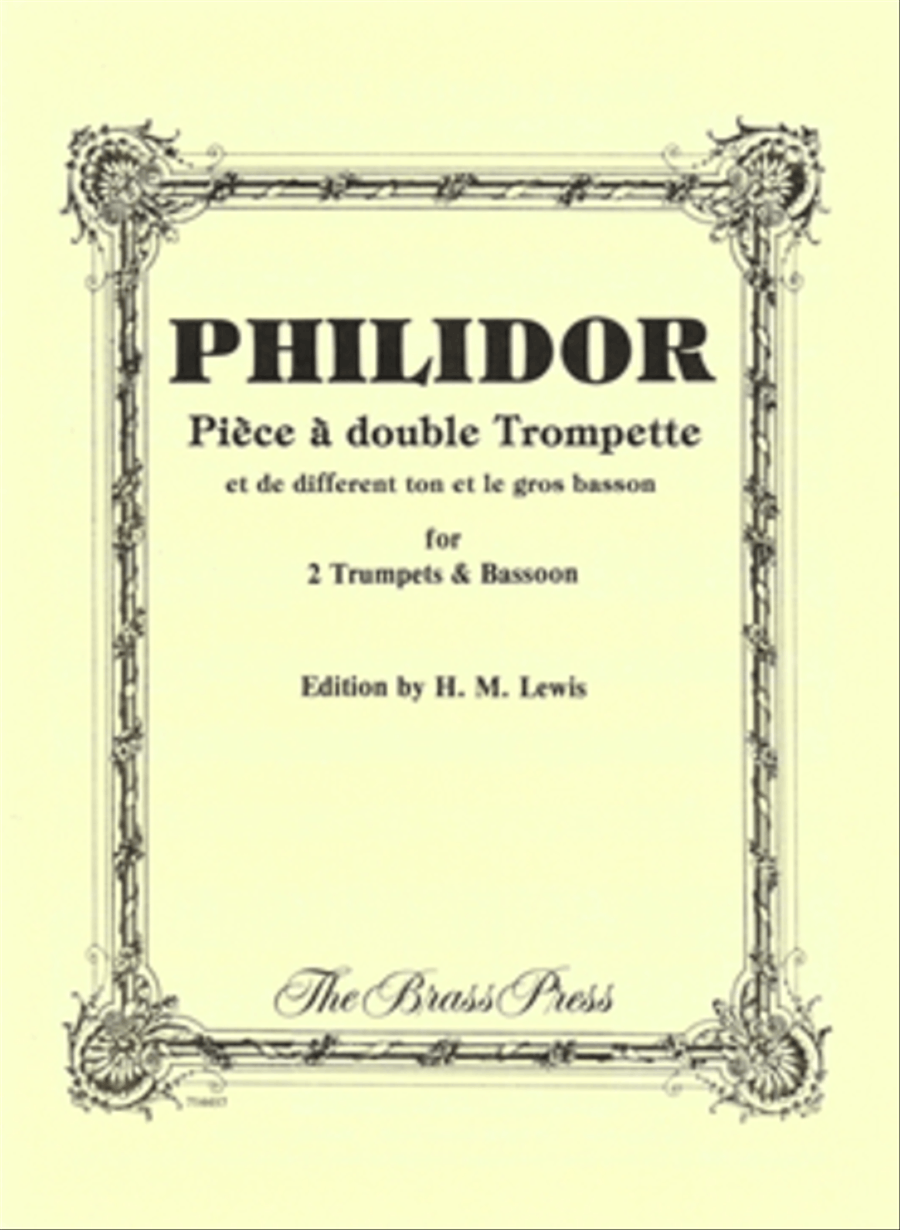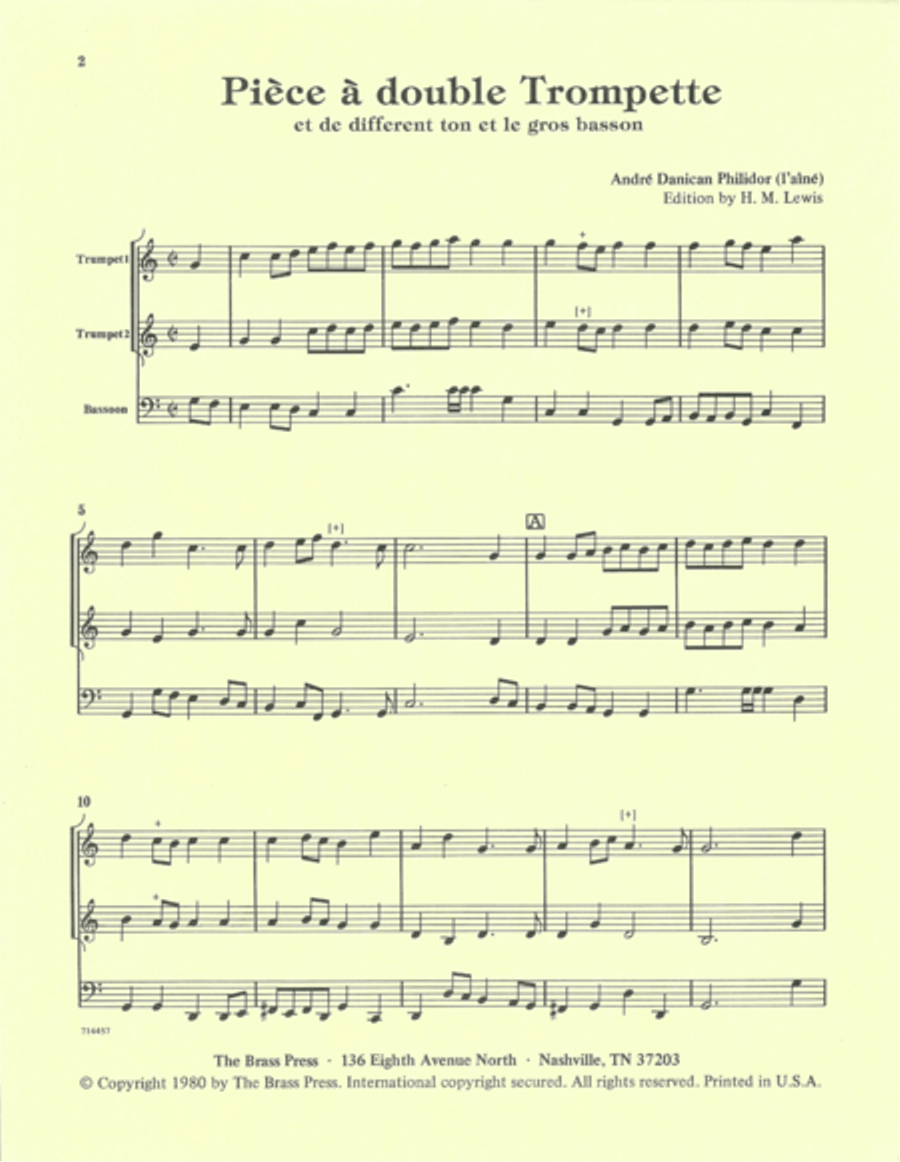Pièce à double trompette
-
Ships in 3 to 4 weeks
Details
- Genres
- Publishers
- Item Types
- Usages
Description
SKU: ET.TP160
Composed by Andre Danican Philidor. Arranged by H. M. Lewis. Baroque. Editions BIM #TP160. Published by Editions BIM (ET.TP160).ISBN 9790207015457.
One of the interesting anomalies in the literature of the Baroque trumpet is a little piece by André Philidor (l'ainé), entitled "Pièce à double Trompette et de différent ton et Ie gros basson de Philidor". It is found in a small oblong volume in the Paris Bibliothèque Nationale (Res. 921) entitled "Pièces de trompettes / de Mrs de la Lande, Rebelle et Philidor / L 'aisné ... et enrichy des Pièces de Mr Huguenet l'aisné compositeur des triots de trompette plus antien ordinaire de la Musique du Roy."
This manuscript collection of 283 pages is one of two collections which comprise the extant music for the trumpet and timpani ensemble of Louis XIV's "Grand Ecurie".
The "Pièce a double Trompette" (pages 60-61) is unusual in that it embodies the apparent use of a great many extra-harmonic tones in the trumpet parts. However, on closer examination, it appears likely that what was actually intended was the use of at least two players on each of the trumpet parts: one playing a normal trumpet in C, which was the instrument used in the French trumpet ensembles of the late seventeenth century, and one playing a trumpet pitched in low G. The trumpets in C would begin the piece, and at the last note of bar 7 the trumpets in G would take over. At the last note of bar 14 the trumpets in C would play again, and so forth. It would have been fairly easy to fashion a long cylindrical crook which would lower a C trumpet to G. The fact that the use of the low G trumpet did not gain acceptance may indicate that its use was experimental and that the experiment was not too successful. Although it was customary for the trumpeters of the "Grande Ecurie" to perform their pieces with multiple players on each part, it probably would be out of character in this piece, since Philidor has specified the bassoon as the bass instrument. The use of a keyboard continuo instrument is not indicated. Philidor makes use of certain figures in the bassoon part which recall those he consistently used in the third trumpet parts (Basse de trompettes) of his trumpet ensembles, indicating that, perhaps, he thought of the bassoon part in a similar manner (i.e., a single bass line without harmonization).
H. M. Lewis.


 Share
Share